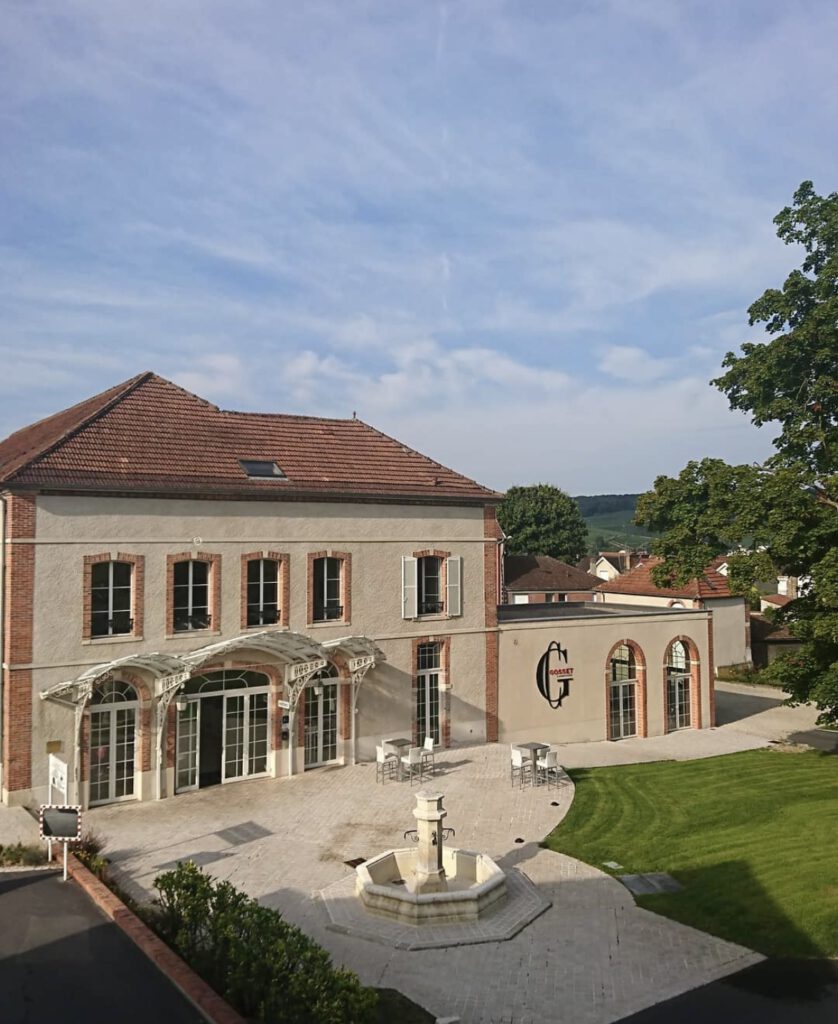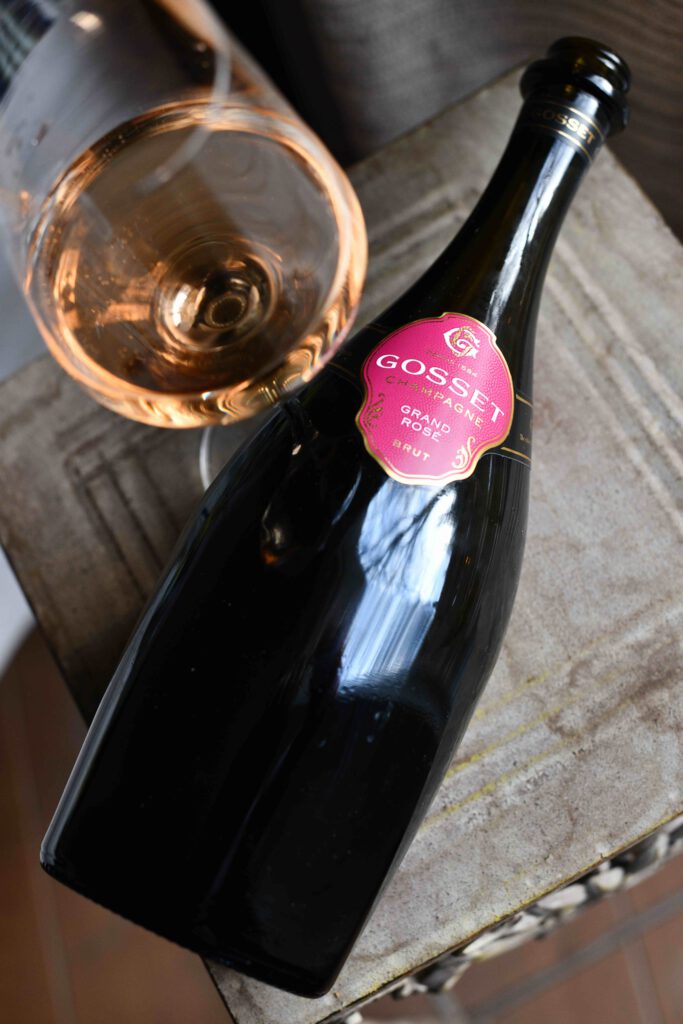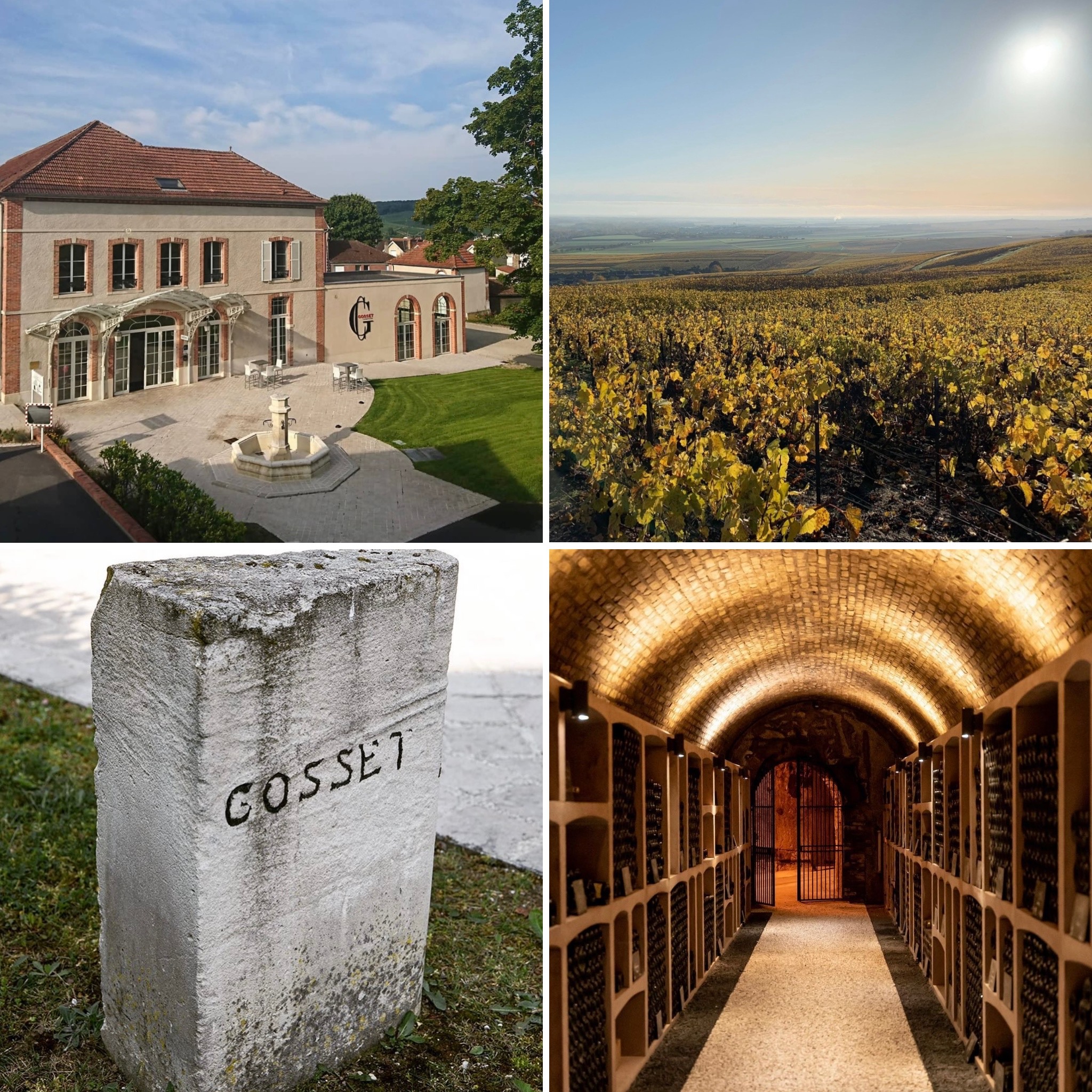Discovering the Legacy of Champagne Gosset.
Welcome to a world where tradition meets excellence, and history is bottled into an experience of timeless taste. In this journey, we invite you to explore the legacy of Champagne Gosset, the oldest wine house in France’s Champagne region. We recently had the privilege to talk with Philippe Antony, Export Director at Gosset, and discussed the fascinating world of this iconic Champagne house.
Join us as we delve into the captivating world of Champagne Gosset, and learn more about this iconic house and their Champagne’s.
The Unique Champagne Region and its History
So, what makes this region so unique that the wines originating from there have acquired fame, status, and recognition across the globe? Let us deep dive into the history to understand how the importance came about rather than plainly summarizing the region’s main characteristic.
How Champagne came about is actually an intriguing story you want to know. The making of Champagne dates back to the 17th century. However, winemaking in the region of Champagne dates back far longer all the way to 5th century (or possible earlier, when the romans planted vineyards in this region). People were keen to produce red wines that could compare with the wines coming from Bordeaux. Yet, the northerly climate of the region gave the people a unique set of challenges to produce these bold red wines. The grapes would struggle to ripen fully and would often have high acidity levels and low sugar levels.
Furthermore, the cold winter temperatures halted fermentation in the cellars, leaving dormant yeast cells that would awaken in the warmth of the spring and start fermenting again. As a result, it would produce the byproduct carbon dioxide gas, which would cause an intense pressure inside the wine bottles. At the time, the early French wine bottles were weak which often caused them to explode. Naturally creating chaos, stress, and disaster within the cellars. When the bottles did survive, they were found to contain bubbles. Something that the winemakers were horrified to see. Even as late as the 17th century, famous winemakers (Dom Pierre Perignon) were still trying to rid their wine of bubbles.
Luckily the British stepped in and saved us all. As they grew fonder and fonder of these ‘strange’ bubbles inside the wines and actually developed a taste for this unique bubbly experience. And so, the sparkling champagne was born and grew in popularity, especially amongst royalty and the wealthy. Is this not a fascinating story to tell?
So now on a more factual note; the region of champagne covers approximately 34,000 hectares of vineyards, covering 319 villages. Of these 319 villages 17 are classified as Grand Cru and 42 as Premier Cru. There are five important sub-regions within Champagne (Montagne de Reims, Vallée de la Marne, Cote des Blancs, Cotes de Sézanne and Cote des Bars.

Domaine Gosset: A Legacy of Craftsmanship Expanded
Epernay, often considered the capital city of Champagne, witnessed significant growth in Champagne production following Nicolas Ruinart’s arrival in 1729. Ruinart is recognized as the oldest Champagne house. This article, however, delves into the fascinating Domaine Gosset, the region’s oldest wine house. Delving deeper into their history we uncover a narrative that intertwines the evolution of Champagne with the enduring legacy of a family’s dedication to the art of winemaking.
Established in 1584 in the town of Ay, just a stone’s throw from Epernay, the saga of Domaine Gosset begins with Pierre Gosset, a winemaker and Alderman of Aÿ, whose initial foray into winemaking involved crafting still red wines from grapes harvested in his own vineyards.
The Gosset family’s journey through five centuries showcases a remarkable commitment to preserving and enhancing the craft passed down through generations. From the humble beginnings of Pierre Gosset’s still wines to the evolution into the sparkling wonders that the world now associates with the name Gosset, each generation has contributed to refining and perfecting their winemaking techniques. This rich history is not just about the passage of time but about the adaptation and innovation in the face of changing tastes, technologies, and climates.
The pivotal shift in Gosset’s production from still to sparkling wine came in the 18th century, a period marked by significant advancements in winemaking techniques and a growing appreciation for the unique character of champagne. The Gosset family, with their deep understanding of the local terroir and a forward-thinking approach, embraced the sparkling method, contributing to the evolution of Champagne as we know it today.

What Sets Gosset Champagnes Apart?
According to Philippe Antony, Regional Export Director, several factors contribute to Gosset’s uniqueness. Their Champagnes reflect the diverse terroirs of the region, emphasizing mineral freshness and natural fruitiness.
The winemaking process is designed to preserve the wine’s full aromatic expression, offering a rich, balanced, and complex experience. An experience loved by many and especially popular amongst top sommeliers, as one can often find Gosset served at fine dining occasions. Gosset Champagne stands strong on its own when served as an aperitif, yet when paired with fine dining it is a match made in heaven.
But there is one more thing. Domaine Gosset’s wines are presented in a distinctive bottle, recognized by its ‘necklace medallion’ label, introduced by Albert Gosset in the 1970’s. This label was designed to look like a jewel adorning the bottle, a unique design that sets Gosset apart in the Champagne region.
Gosset’s Exquisite Champagnes: An In-Depth Review
Together with Philippe we had the opportunity to taste two of Gosset’s most remarkable creations, the ‘Gosset Grand Rosé’ and the ‘Gosset Grande Reserve’. Two wines that stand out for their distinct profiles and exquisite taste.

Gosset Grand Rosé: A Symphony of Flavors
The Gosset Grand Rosé is an exquisite representation of the house’s mastery in blending. This Champagne, with its higher percentage of Chardonnay, exhibits a vibrant freshness and an inviting fruitiness.
Assemblage:
- Composition: Chardonnay 55%, Pinot Noir 37 %, 8% Pinot Noir vinified as a red wine (Ambonnay, Bouzy, Cumières)
- Cellaring: End of spring 2019 – 4 years minimum in cellar
- Disgorgement: after disgorgement, the bottles are returned to the cellars to rest for at least 6 months to allow the wine to smoothly assimilate the dosage
- Origin: The villages of: Ambonnay, Aÿ, Bouzy, Chouilly, Verzenay, Villers-Marmery.
- Dosage: 8 g/l
It presents a pale pink hue, a visual promise of the elegance it holds. On the nose, it offers a bouquet of red fruits, hints of citrus, and a subtle floral note, reminiscent of a blooming orchard in spring.
The palate is greeted with a delicate yet pronounced blend of flavors – from ripe strawberries and raspberries to a touch of peach, all balanced with a surprising hint of salt. This salinity nods to the unique climate and terroir of the Champagne region, adding an unexpected yet delightful complexity to the rosé. Aged for four years, it achieves a refined balance between freshness and depth
We award this Champagne with a 93-point DWA score.

Gosset Grande Reserve: The Quintessence of Champagne
The Gosset Grande Reserve Brut is the very heart of Gosset’s Champagne range. Dominated by Pinot Noir, with a refreshing touch of Chardonnay, this Champagne presents an elegant, mineral finish that speaks of the finesse of its crafting. The Grande Reserve is a harmonious blend of strength and delicacy, a balancing act that Gosset has mastered over centuries.
Assemblage:
- Composition: Chardonnay 45%, Pinot Noir 45 %, Meunier 10%
- Cellaring: End of spring 2019 – 4 years minimum in cellar
- Disgorgement: After disgorgement, the bottles are returned to the cellars to rest for at least 6 months to allow the wine to smoothly assimilate the dosage
- Origin: The villages of Aÿ, Bouzy, Ambonnay, Le Mesnil-sur-Oger and Villers-Marmery
- Dosage: 8 g/l
The Grande Reserve exudes a golden colour with fine, lively bubbles. The nose is a rich tapestry of aromas, featuring ripe orchard fruits like apple and pear, interwoven with hints of toasted brioche and almond, a nod to its maturation process.
On the palate, the Grande Reserve showcases a robust structure, anchored by the dominance of Pinot Noir. Layers of fruit flavors, including peach and apricot, are complemented by a subtle toastiness and a touch of spice. The Chardonnay component brings a refreshing counterpoint, adding brightness and elegance. The texture is both creamy and vibrant, with a fine mousse that enhances the wine’s depth and complexity. The finish is persistent and nuanced, leaving a memorable impression of richness balanced with a refined, mineral-driven freshness.
We award this Champagne with a 93-point DWA score.

The Enduring Allure of Gosset – A Toast to Tradition and Quality
Our experience with Gosset Champagnes was enlightening, highlighting the importance of understanding the craftsmanship, history, and passion behind each bottle. Philippe’s dedication to educating others about the world of Champagne is commendable, essential for appreciating the uniqueness of these wines in a region dominated by the Champagne brand.
Champagne Gosset is imported in the Netherlands by Goessens Professionals in Wine, and available through selected partners in retail and hospitality. This article was written by our own Eline de Geus and Niels Aarts. We would like to thank Goessens and Champagne Gosset, Philippe Antony in particular, for their support in writing this article.
Picture credits: Eline de Geus and Champagne Gosset.

